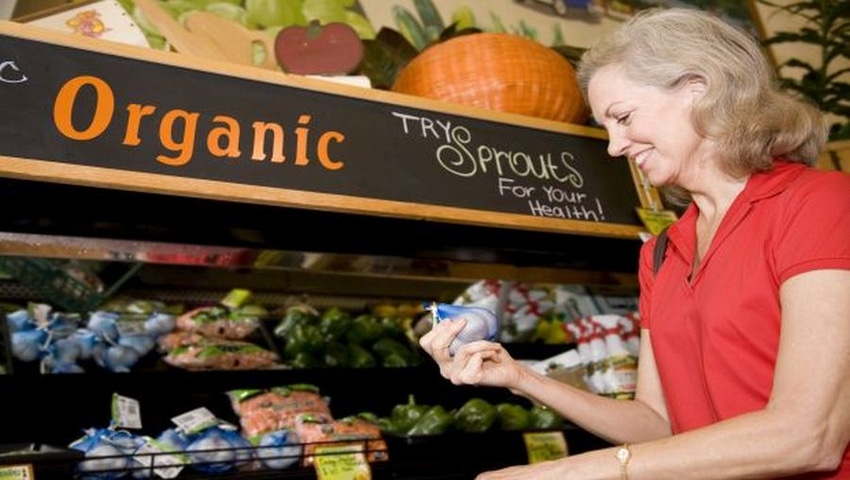
U.S. sales of organic food and non-food products posted new records in 2015, skyrocketing to a whopping $43.3 billion, up 11 percent from the previous year and outpacing the overall food market’s growth rate of 3 percent, according to the latest survey on the organic industry from the Organic Trade Association (OTA).
The industry saw its largest annual dollar gain ever in 2015, adding $4.2 billion in sales, up from the $3.9 billion in new sales recorded in 2014. Of the $43.3 billion in total organic sales, $39.7 billion were organic food sales, up 11 percent from the previous year, and non-food organic products accounted for $3.6 billion, up 13 percent. Moreover, nearly 5 percent of all the food sold in the United States in 2015 was organic.
Despite the continued struggle to meet the seemingly unquenchable consumer demand for organic, 2015 was a year of significant growth for the industry. Supply issues persisted to dominate the industry, as organic production in the U.S. lagged behind consumption. In response, the organic industry came together in creative and proactive ways to address the supply challenge, to improve and develop infrastructure, and to advocate for policy to advance the sector.
Organic fruits and vegetables retained its longstanding spot as the largest of all the major organic categories with sales of $14.4 billion, up 10.5 percent. Almost 13 percent of the produce sold in this country is now organic. The demand for fresh organic was most evident in the continued growth of “fresh juices and drinks," which saw explosive growth of 33.5 percent in 2015, making it the fastest-growing of all the organic subcategories. The fastest-growing of the eight major organic categories was condiments, which crossed the $1 billion mark in sales for the first time in 2015, on 18.5 percent growth.
Dairy, the second biggest organic food category, accounted for $6 billion in sales, an increase of more than 10 percent. Dairy accounts for 15 percent of total organic food sales. The organic snack food category rang up $2.3 billion in sales, up almost 14 percent from 2014 and more than tripling the level of just 10 years ago.
“The industry joined in collaborative ways to invest in infrastructure and education, and individual companies invested in their own supply chains to ensure a dependable stream of organic products for the consumer. Despite all the challenges, the organic industry saw its largest dollar growth ever. Organic will continue to be the most meaningful farm-to-fork—and fiber—system," said OTA’s CEO and Executive Director Laura Batcha.
According to the OTA, consumers are not just eating organic, they are incorporating more into their total lifestyle. Even though non-food products account for just 8.2 percent of overall organic sales, the almost 13 percent growth rate in the sales of organic non-food products outpaces the growth rate in organic food, as well as the overall growth of comparable products, primarily conventional, which inched up by a mere 2.8 percent. Growth in the non-food category was led by organic fiber, followed closely by organic supplements.
Increased consumer demand for organic products in 2015 could also be attributed to greater access to these products from mainstream retailers. As supermarkets, big box stores, membership warehouse clubs, and other outlets continued to up their organic offerings, organic options have become more available than ever before.
Growth in the organic market, however, did not come without continued challenges to the supply chain. Dairy and grains were two areas where growth could have been even more robust in 2015 if greater supply had been available. There is an industrywide understanding of the need to build a secure supply chain that can support demand—this goes hand-in-hand with securing more organic acreage, developing programs to help farmers transition to organic, and encouraging new farmers to farm organically.
Some companies are dealing with these supply issues individually, while others are working together to address this concern. One example is the U.S. Organic Grain Collaborative, whose members include Annie’s, Stonyfield, Organic Valley, Clif Bar, Nature’s Path and Grain Millers, among others. On the fiber side, 2015 saw the creation of OTA’s Organic Fiber Council, which includes members from across the organic fiber industry, and whose focus is to increase the awareness of the benefits of organic fibers and to encourage more organic cotton acreage in the United States.
About the Author(s)
You May Also Like






.png?width=800&auto=webp&quality=80&disable=upscale)